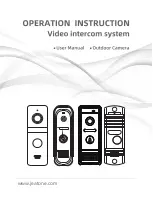
750 XTR Series
Planning
System manual | Version: 2.0.0
39
Grounding
The use of a functional ground increases the immunity to electromagnetic interference.
The components of the I/O system have a DIN-rail contact that diverts electromagnetic
interference to the DIN-rail.
Figure 18: DIN-Rail Contact (Example)
Thus the DIN-rail is used as potential distribution for the functional ground. The DIN-rail
must itself be well grounded in order to play this role. For this purpose, the DIN-rail must
have a low-impedance connection to frame, housing or system parts that are themselves
already grounded.
If the supporting surface is electrically conductive, the DIN-rail can be grounded through
the screw connection. This setup is called the “frame setup.” Using a metallic mounting
plate achieves the best results.
With a non-conductive supporting surface – referred to as an “insulated setup” – the DIN-
rail must be connected to the ground potential through a separate electrical conductor.
The conductor can be connected to the DIN-rail with WAGO shield terminal blocks (from
Series 279, 280 and 281).
Proper electrical connection between the DIN-rail and the system’s ground potential must
be verified before commissioning.
Shielding
Use of shielded cables reduces electromagnetic interference and thus increases signal
quality. This can prevent measurement errors, data transmission errors and interference
due to excessive voltage.
The shielding of bus lines is described in the respective configuration guidelines and
standards for the bus system. The following description refers to the shielding of other
signal cables connected to I/O modules.
• For I/O modules that process analog signals or have connection points for a cable
shield, the specified accuracy and immunity to interference are only guaranteed if the
shielding is correct.
• For I/O modules with appropriate connections, you can connect the cable shield di-
rectly; for others, use the WAGO shield connection system. The WAGO 790 Series
Shield Connection System consists of shield clamping saddles, busbars and various
mounting carriers. With these parts, many different setups can be implemented.
















































